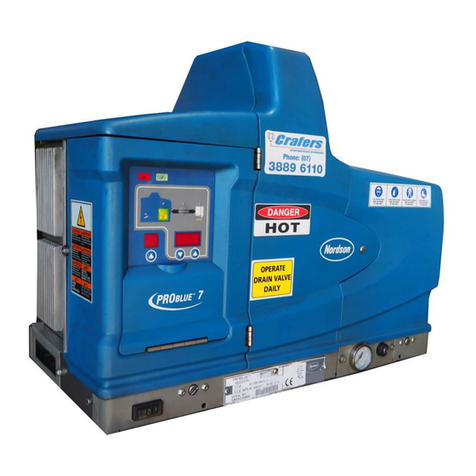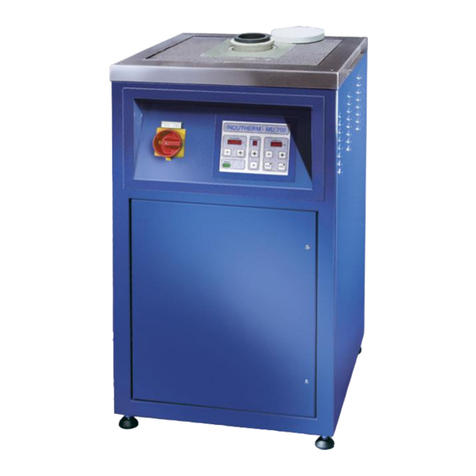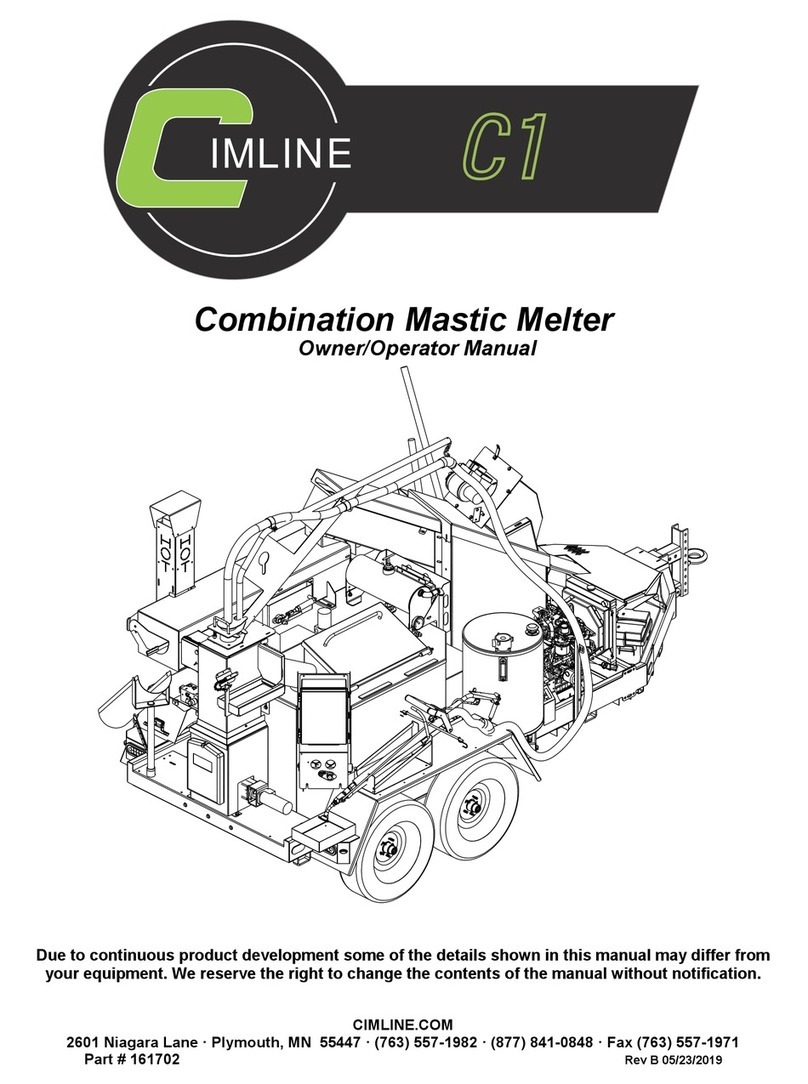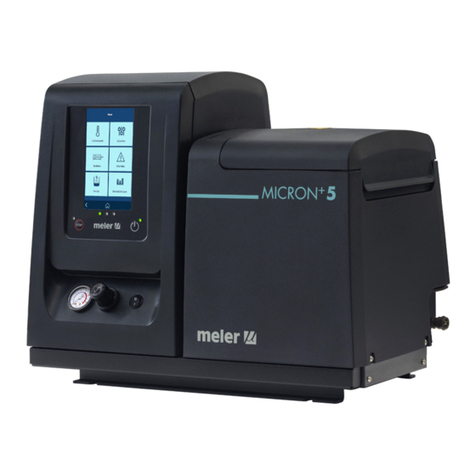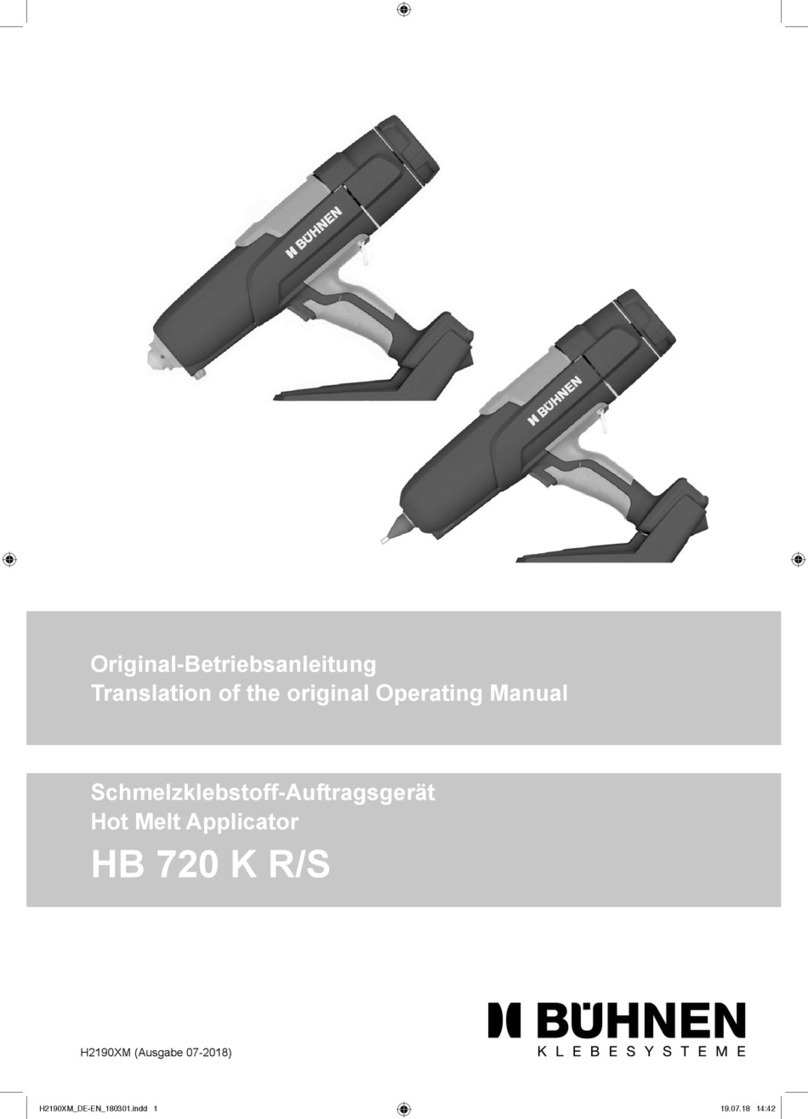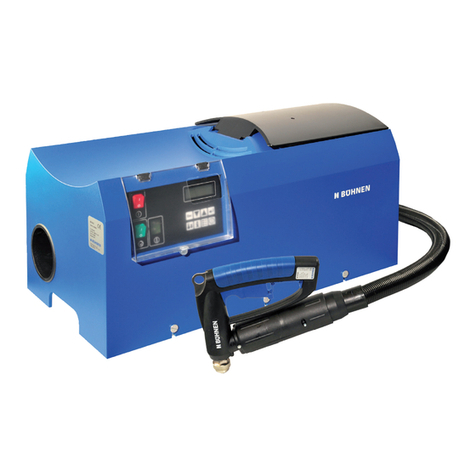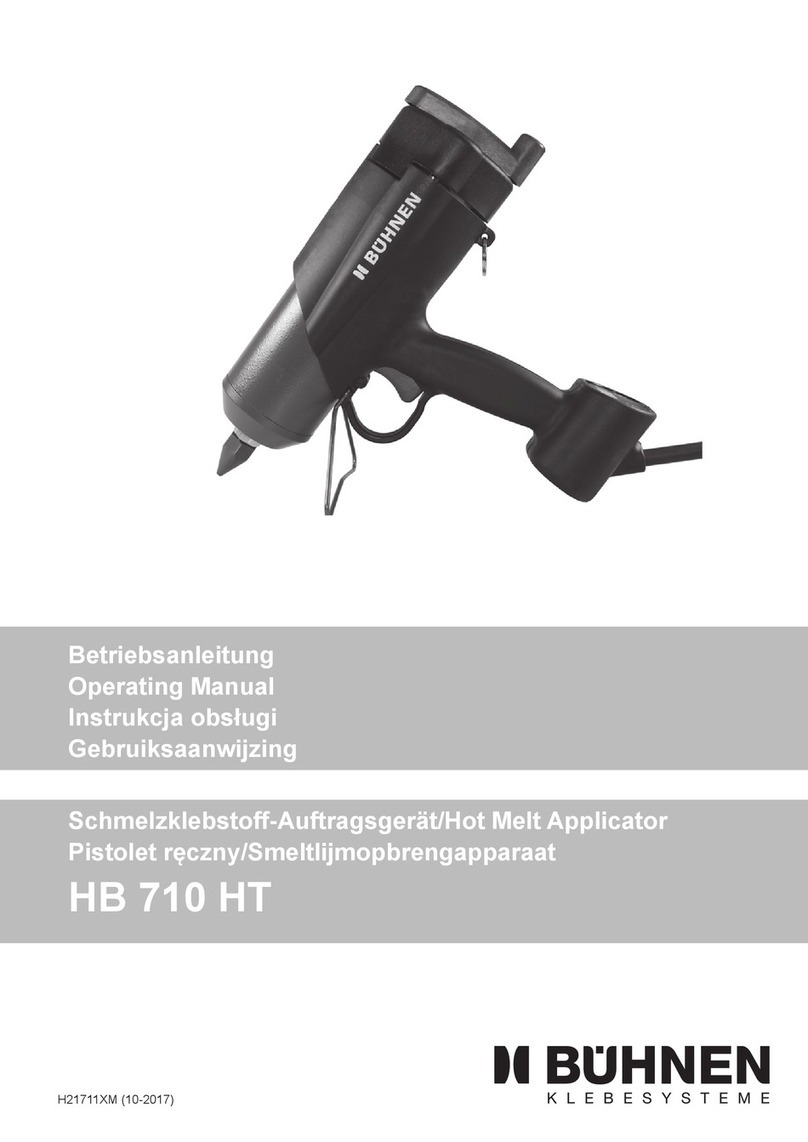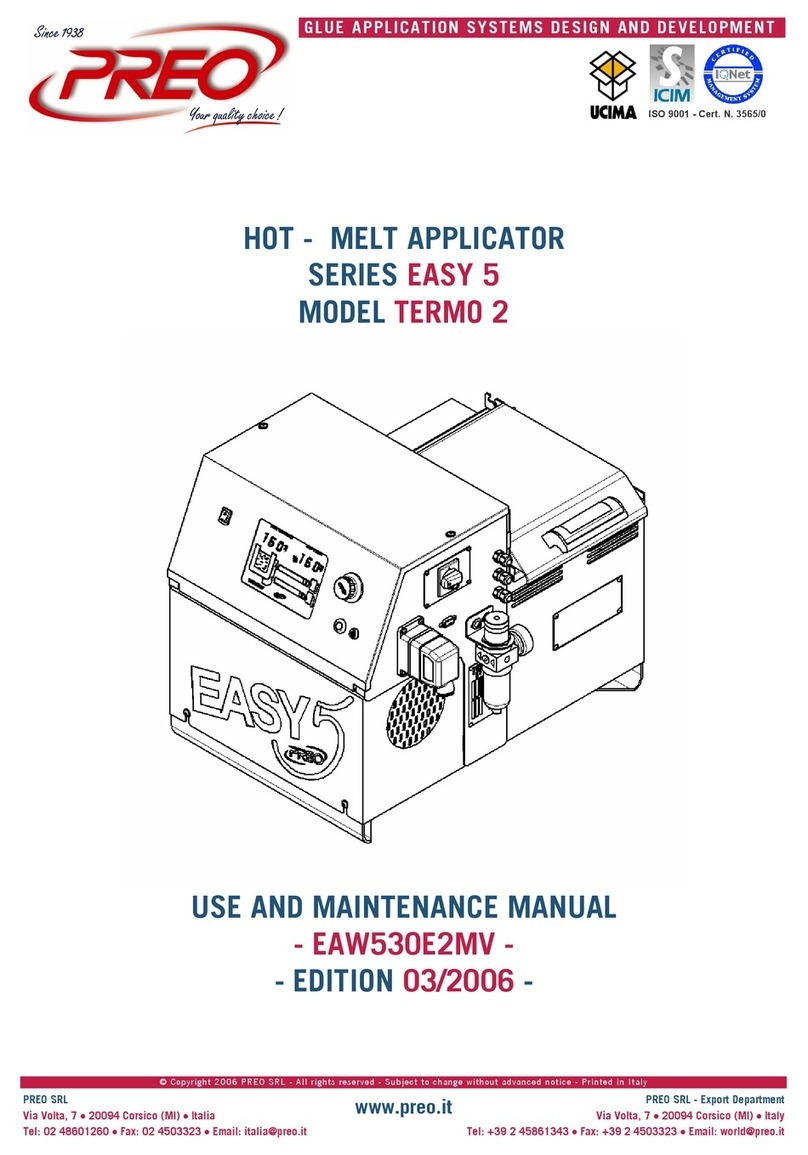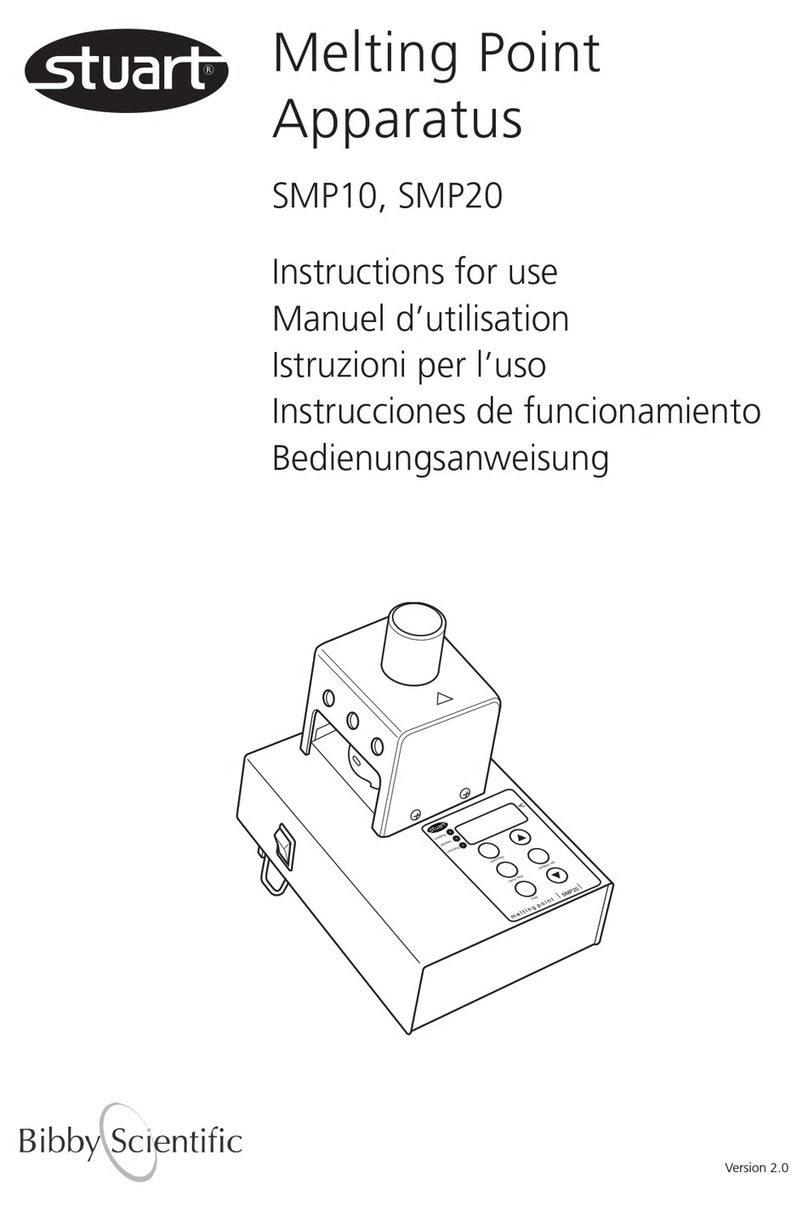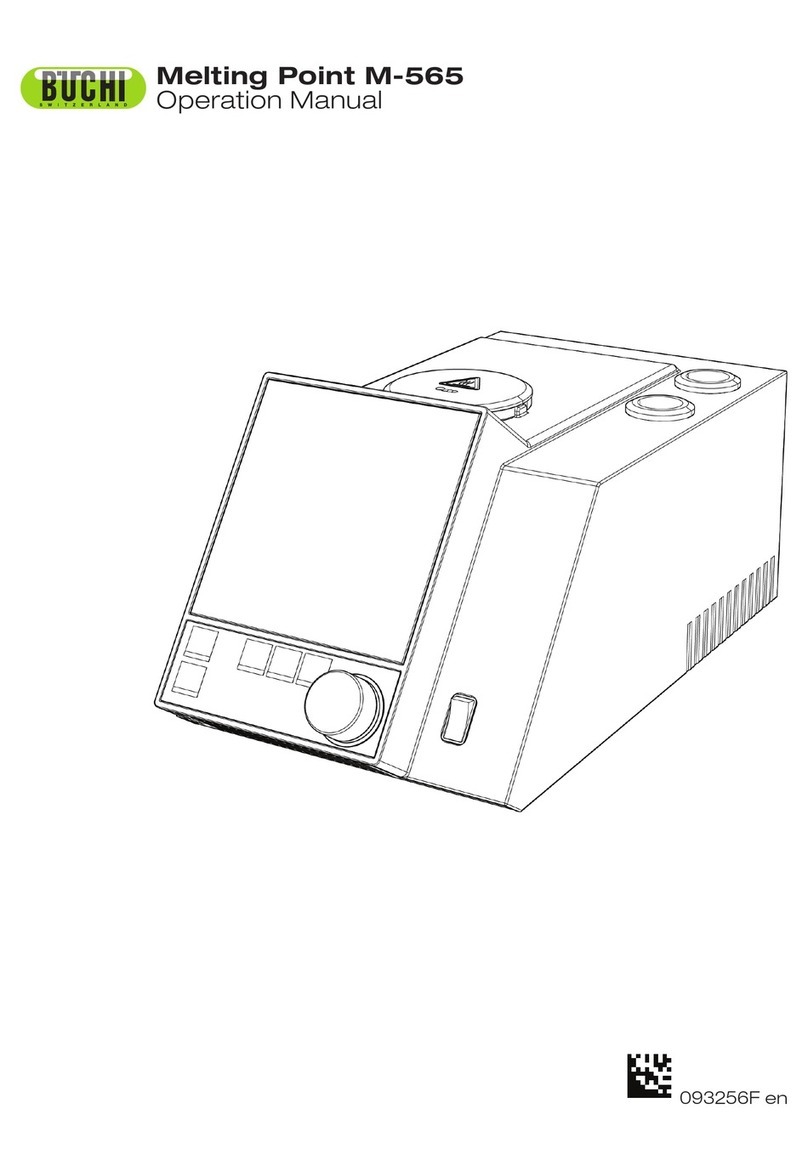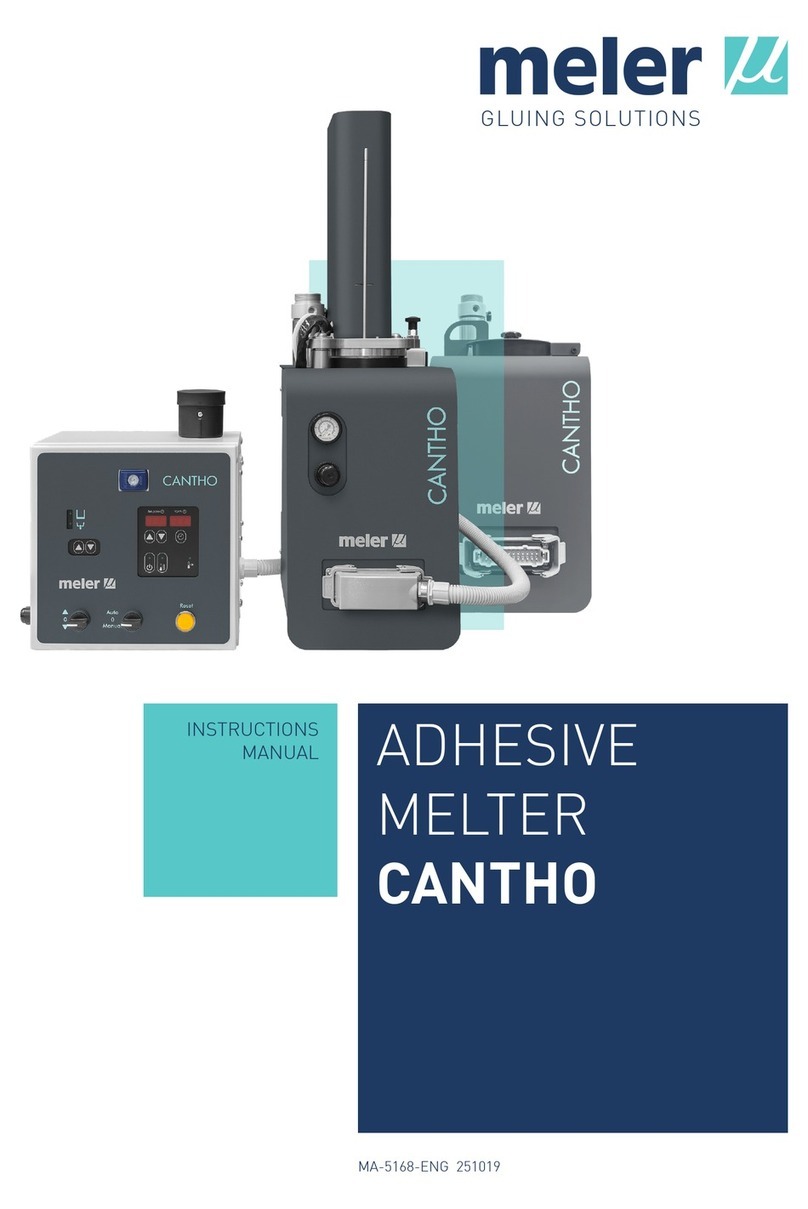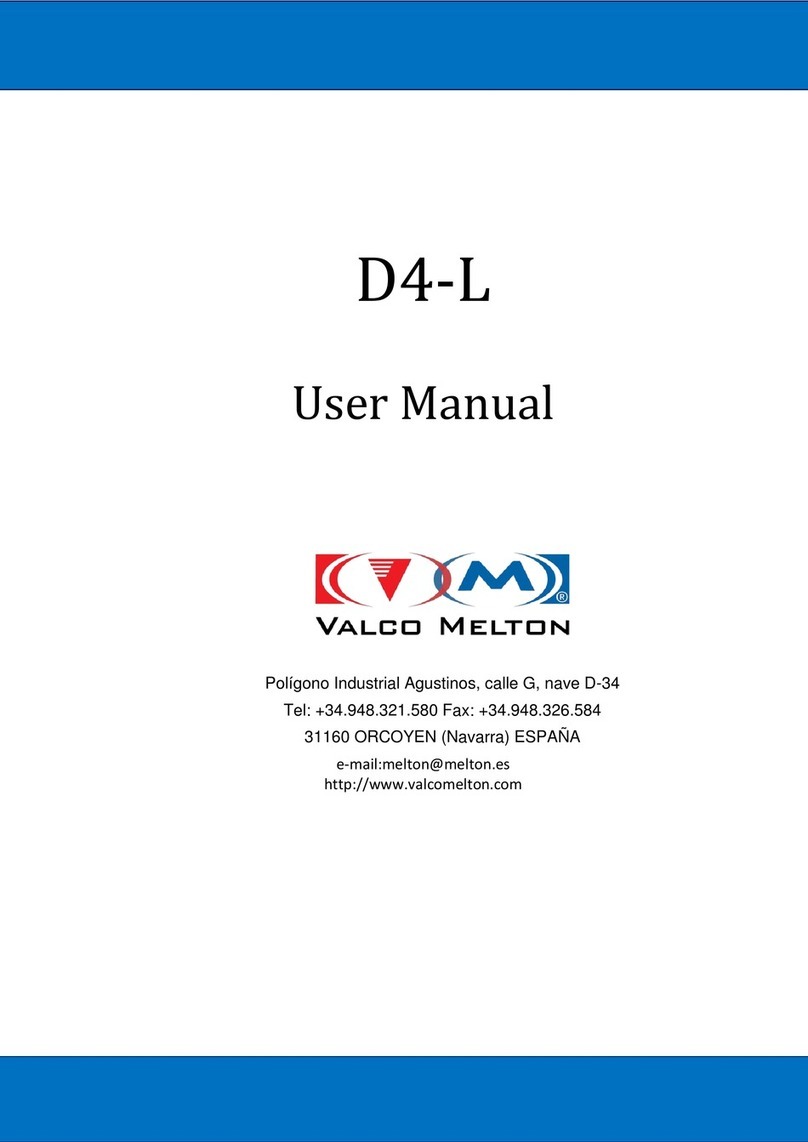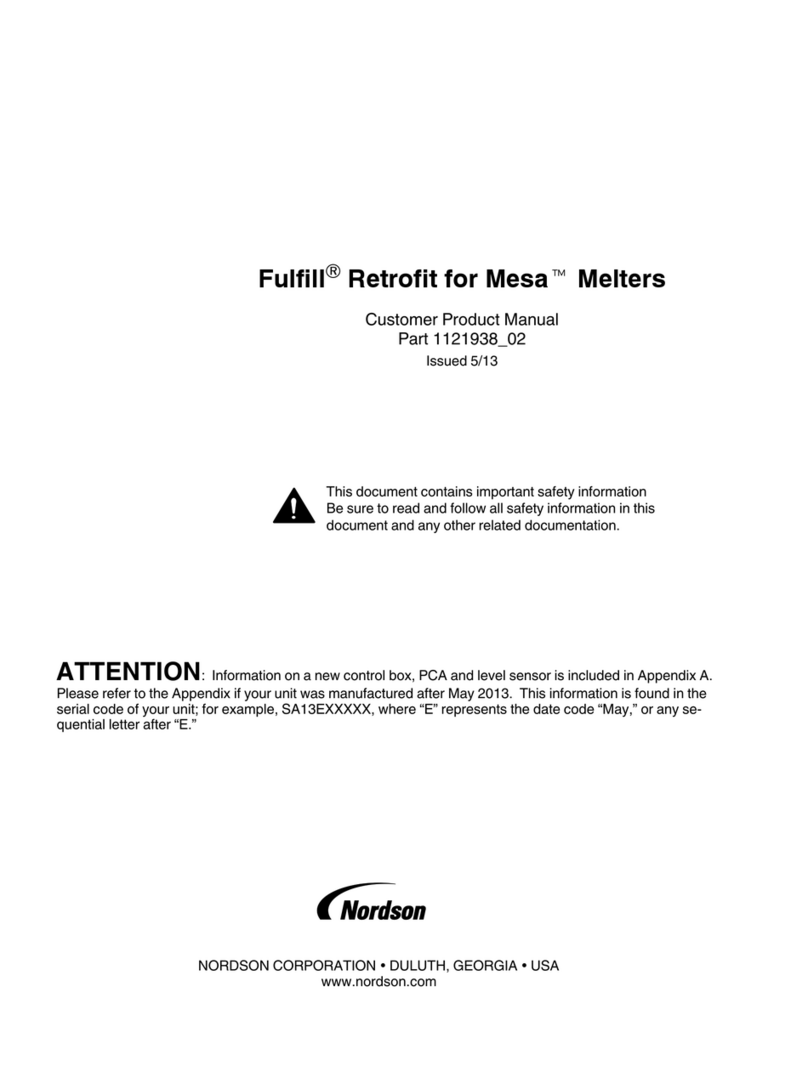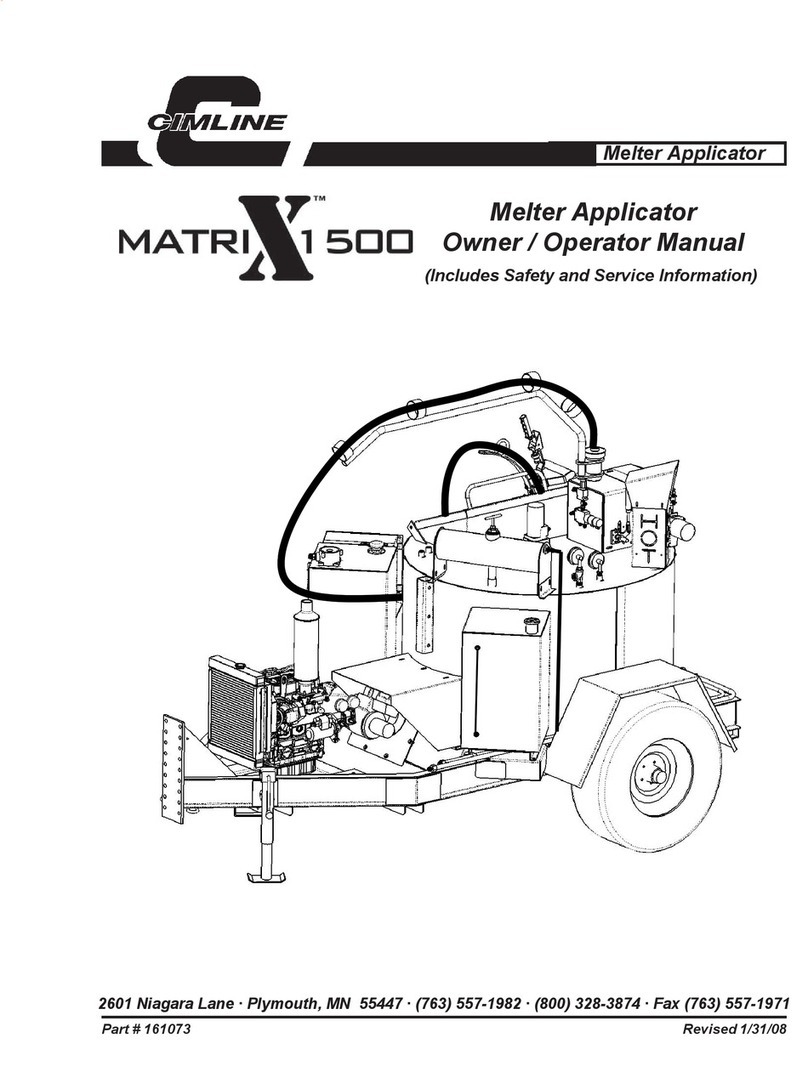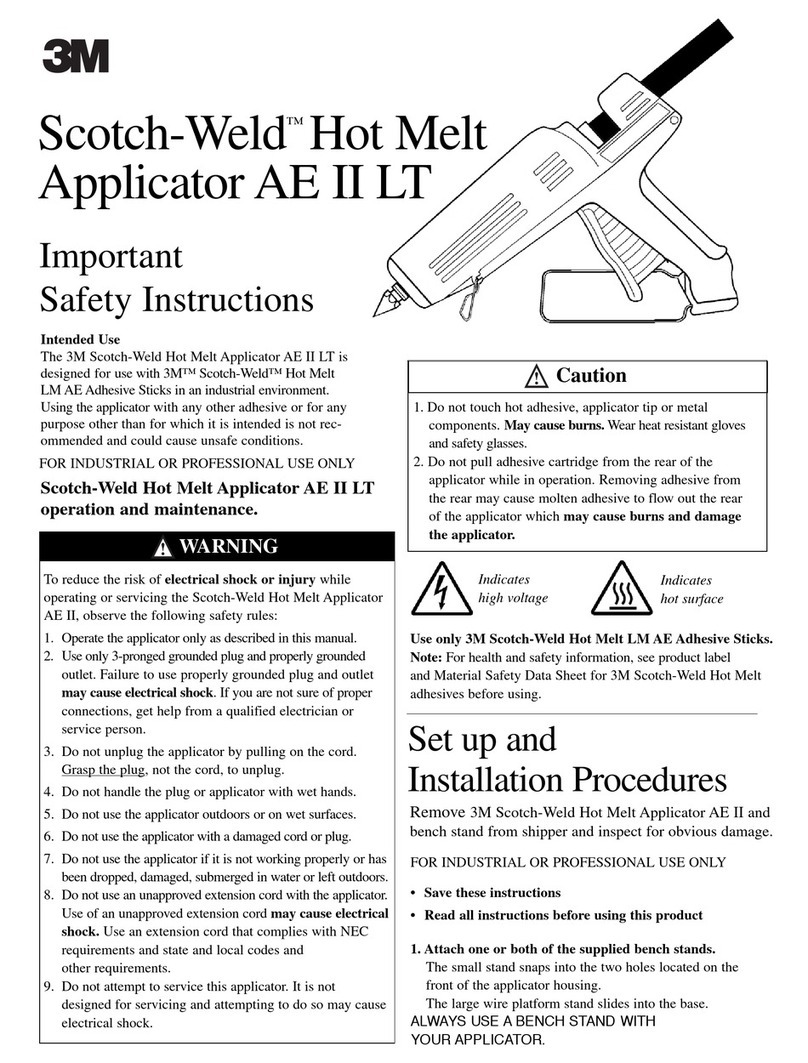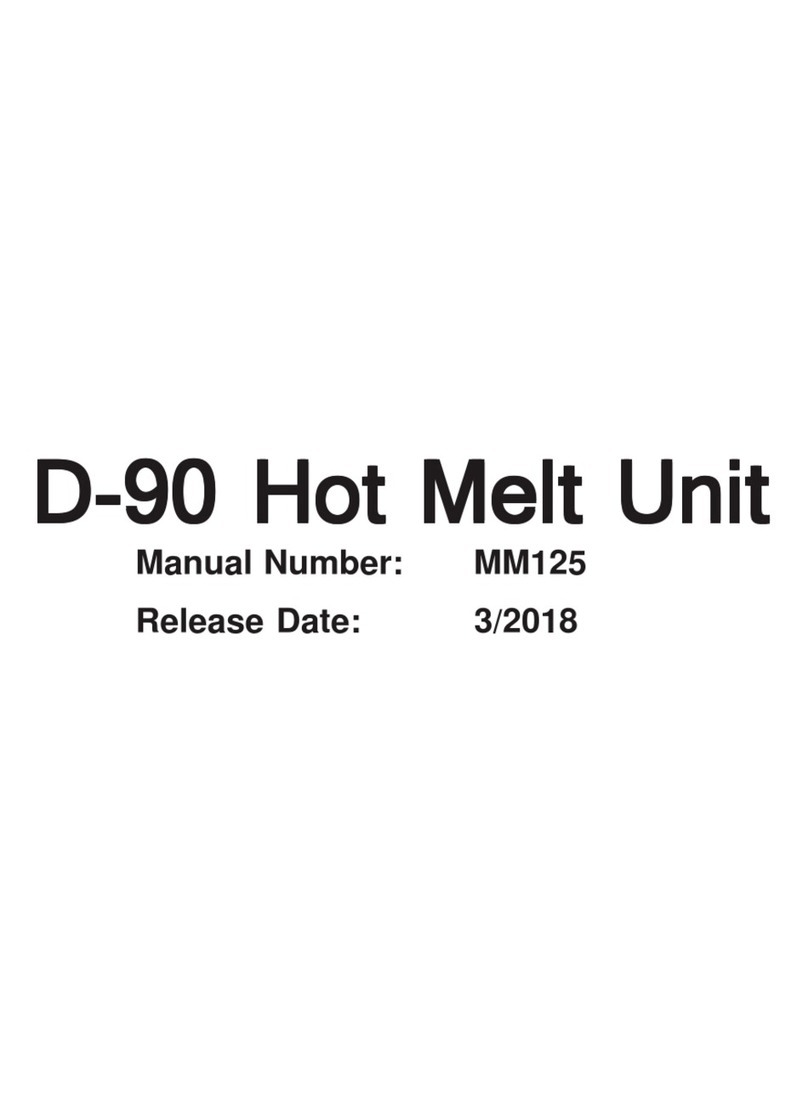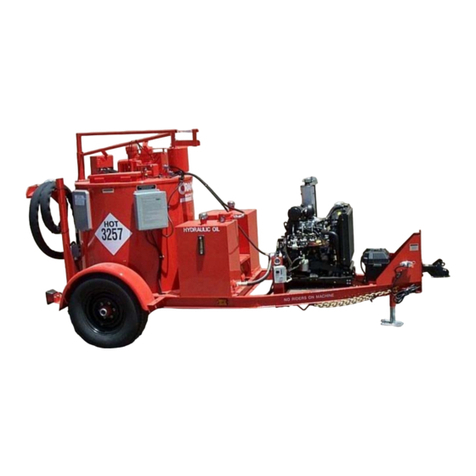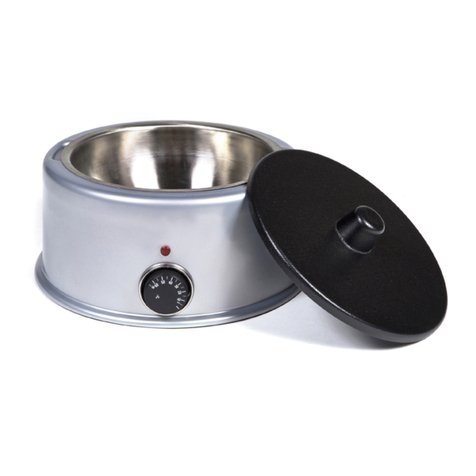
6
3.2 Connecting
The pressure of the compressed air supply must never exceed 145 psi.
The compressed air must be free of moisture and acid.
If necessary, fit a pressure reducing valve with inline safety valve (reaction pressure 145 psi) and addsuitable filters to the supply line.
3.2.1 with appliance bracket/stand
Connect the compressed air hose to the compressed air connection (1) with a quick-action release connector (6 mm).
Set the operating pressure (see pressure gauge, 3) initially to 58 psi / 4 bar using the pressure regulator (4).
3.2.2 with separate pressure reducing valve
Connect the compressed air hose to the pressure reducing valve and the pressure reducing valve to a quick-action release connector.
Set the operating pressure initially to 58 psi / 4 bar using the pressure regulator.
Make sure the main voltage is the same as the working voltage indicated on the maker’s plate.
Plug the applicator into a 120 V grounded receptacle.
3.3 Switching on
As soon as the start/stop-button (6) has been pressed, the applicator heats up.
Press the start/stop-button (6) for at least 1 second.
The digital display (5) lights up and the left decimal dot flashes until the target temperature has been reached.
The digital display (5) indicates the actual temperature of the applicator. When the set-button (7) is pressed, the preset temperature
is indicated.
3.4 Settings at the temperature controller
3.4.1 Setting of control parameters in the first operating level
Never set the temperature higher than the working temperature of the hot melt adhesive to avoid burning it.
The temperature has been set by the manufacturer to approx. 356°F / 180 °C.
Press set-button (7).
Using the Down (9) and Up (8) buttons, adjust the pre-set temperature showing on the digital display (5) to the level
recommended by the adhesive manufacturer.
Switching off, even for a long period, does not change the temperature set. Environmental conditions (as influence of strong high fre-
quency interference / transmitter stations) and electrical fluctuations may cause differences of 2 - 4 °F. It is therefore recommended
that the preselected temperature is checked occasionally and adjusted if necessary.
3.4.2 Setting of control parameters in the second operating level
By pressing the Up and Down button (8/9) for at least 4 seconds you will enter a list for control parameter (starting with P1). With the
Up button you can browse the list upwards and with the Down button downwards again.
Pressing the set-button (7), the value of the concerning parameter. By pressing additional the Up and Down button the value will be
changed. After releasing all buttons the new value will be stored constantly. If no button is pressed longer than 60 seconds, the tem-
perature controller is set to its basic settings.
P1 Scheduled value reduction
If the hot melt applicator is not in use for a longer period, the temperature controller switches automatically to operation with scheduled
value reduction. The temperature controller is set to a value, which is less than the factory adjustment by the reduction, adjusted at
P1 (Reduced value = S1 – P1).
The temperature controller switchesbackto normal operating value S1,if either theUp andDown buttonwill be pressed orif thetrigger
(16) will be squeezed.
Parameter Function specification Setting range Standard
value Customer
value
P1 Scheduled value reduction 1...100 K 40,0 K
P2 Waiting time until reduction 1...999 minutes 30 min
P11 Working hour meter, „1 to 999“
P12 Working hour meter, „1000 to 9999“
P13 Quantity of triggering, „1 to 999“
P14 Quantity of triggering, „1000 to 9999“
P19 Button locking
(Altering of value blocked) 0: Not locked
1: Locked 0
2SHUDWLRQVHWWLQJV

